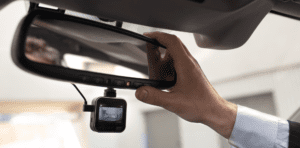Compare cheap car insurance
✔ Compare cheap car insurance quotes
✔ Over 110 insurance providers
✔ Get a quote in minutes
✔ Save up to £504*
Prior to embarking on your overseas driving adventure, there are several crucial points to be aware of.
- Do I need car insurance for driving abroad?
- How do I know if my car insurance covers me when driving abroad?
- What about insurance if I’m hiring a car?
- What documents do I need to drive abroad?
- What do I need to take in my vehicle when driving abroad?
- What’s a Green Card?
- What is an International Driving Permit?
- How to get an international driving permit?
- Do I need breakdown cover to drive in Europe?
- What rules do I need to be aware of when travelling abroad?
- Frequently asked questions
Do I need car insurance for driving abroad?
Yes, car insurance is a mandatory requirement for driving overseas, whether you’re driving your own car or renting one upon arrival. You are obliged to carry, at a minimum, third-party car insurance while driving internationally.


If you are a UK resident, your domestic car insurance policy typically extends third-party cover internationally when you drive your own car. It’s advised to review your policy or consult your insurance provider to understand the specifics of your cover while abroad.
How much can you save on your car insurance?
How do I know if my car insurance covers me when driving abroad?
To determine whether your car insurance covers international driving, you should take the following steps:
Review Your Policy Documents
Your policy details will specify the extent of cover, including if and where it extends outside of your home country. Always consult this document first.
Contact Your Insurance Provider
If you’re uncertain or need further clarification after reviewing your policy, contact your insurance company directly. They can provide specifics and answer any questions you might have.


Coverage in the EU
For those with UK-based car insurance policies, it’s standard to receive at least third-party cover when driving within the European Union (EU), including Ireland. However, this cover may not automatically apply outside of the EU.


Understand the Specifics:
Level of Cover
While your domestic policy might be comprehensive, overseas cover might only provide basic protection. Never assume that comprehensive cover at home equates to the same level of protection abroad. It’s essential to understand the nuances.
Duration of Cover
Insurance policies may have restrictions on the length of time you’re covered abroad. Some might limit cover to consecutive days, such as a 14-day stretch, while others might provide a cumulative yearly allowance. Understanding this can help you plan better.
Discuss Your Travel Plans
Before embarking on your trip, have a conversation with your insurance provider. Outline your travel dates and destinations, ensuring that your cover aligns with your itinerary. If your current policy doesn’t adequately cover your trip, you might need to purchase additional cover or an extension.
It’s imperative to thoroughly understand your insurance policy when considering driving abroad. Not doing so could lead to unforeseen expenses or complications in the event of an accident or incident.
How much can you save on your car insurance?
What about insurance if I’m hiring a car?
Securing proper car insurance is crucial when hiring a car, either abroad or domestically before travelling internationally.


Below are steps and considerations to ensure you’re adequately covered:
Understand Included Insurance
- Basic Coverage: Typically, the cost of hiring a car encompasses basic insurance cover. This cover often includes:
- Collision Damage Waiver (CDW)
- Liability Insurance
- Theft Protection
- Excess Amount: Assess the excess fee, which is the amount you’ll be responsible for paying in the event of an insurance claim. This amount can vary significantly between different rental companies.
Check Additional Coverage Options
- Rental companies usually offer additional cover options, often encompassing enhanced protection and reduced excess. It’s prudent to consider these, especially if the included insurance has high excess or limited cover.
Review Your Travel Insurance
- Some travel insurance policies might offer cover for rental cars. Review your travel insurance policy to avoid duplicating cover you already possess.
Prepare Required Documents
- Driving Licence: Rental companies will request to see your driving licence. For UK drivers hiring abroad, acquiring a DVLA check code to share your driving record might be necessary. This code is obtainable up to 21 days prior to your travel.
- VE103 Form: If you’ve hired or leased a car in the UK and plan to drive it abroad, secure a VE103 vehicle-on-hire certificate. This document evidences your authorisation to drive the hired or leased vehicle internationally.
Research and Plan Ahead
- Make inquiries and understand the insurance nuances of the hire company. Different companies may have varying policies, and understanding these distinctions is essential for informed decision-making.
Consult with the Hire or Lease Company
- Speak with the company from which you’re hiring or leasing the vehicle for specific and detailed information pertaining to insurance cover and required documentation.
Understanding the intricacies of insurance cover when hiring a car for international travel is imperative.
Familiarise yourself with both the included and optional insurance covers, know the excess, and prepare the necessary documentation to facilitate a smooth and worry-free driving experience abroad.
Conduct diligent research and consider consulting with professionals for guidance to navigate the complexities of car hire insurance effectively.
How much can you save on your car insurance?
What documents do I need to drive abroad?
When driving abroad, it is crucial to carry the right documentation to avoid legal complications and to be adequately prepared for various situations that may arise during your travel. The following are the primary documents you’ll need:
Essential Documents
- Valid Full UK Driving Licence: Ensure your licence is current and valid for the entire duration of your trip.
- National Insurance Number: This should accompany your driving license.
- Proof of Valid UK Car Insurance: Carry documentation proving you have active car insurance cover.
- Proof of Identification: A valid passport is generally accepted as a credible form of identification.
- Vehicle’s V5C Registration Certificate (Log Book): This document proves your ownership or entitlement to use the vehicle.
- Travel Insurance Documents: Having travel insurance can provide additional protection during your trip.
- European Breakdown Cover Policy: Secure and carry documentation for a breakdown cover policy valid in the countries you’ll be visiting.
Additional Documents
- For Boating or Driving Non-standard Vehicles: If you are travelling with a boat or a vehicle other than a car or motorbike, additional documentation may be required.
Country-Specific Requirements
- International Driving Permit (IDP): An IDP is necessary for countries outside the EU and EEA or where UK licences are not recognised. Some countries may have specific IDP requirements, so research the type needed for each country you plan to visit.
- Green Card: This serves as international proof of insurance if you’re driving outside the European Economic Area (EEA). It demonstrates that your vehicle is insured to at least the minimum legal requirement in the country you’re driving.
- UK Car Sticker: Displaying a UK sticker on your vehicle is mandatory in some countries if your number plate doesn’t include the UK identifier.
- Emission Permits: Certain European cities have low emission zones, and a permit may be needed to drive in these areas.
Additional Considerations
- Familiarise yourself with the driving laws and documentation requirements of each country you intend to visit.
- Carry both original and photocopy versions of all documents. Keeping digital copies accessible on a secure device can also be beneficial.
- Organise your documents in a manner that makes them easily accessible when needed.
Preparation is Key
Taking the time to diligently prepare and organise the necessary documentation will facilitate a smoother and more enjoyable driving experience abroad.


Ensure to check the specific requirements of your destination well in advance, as processing some documents might take time.
How much can you save on your car insurance?
What do I need to take in my vehicle when driving abroad?
Driving abroad necessitates careful preparation, including ensuring your car is equipped with various items mandated or recommended for safety and compliance in the countries you plan to visit. Below are general and specific items you may need:
Mandatory Items for the EU
- Reflective Jackets: Each passenger must have one accessible within the car, not in the trunk, as they must be worn in case of breakdown or emergency stops.
- Warning Triangle: Vital for signalling to other drivers if you have stopped on the side of the road.
- Headlamp Deflector Stickers: These adjust the beam of your headlights to prevent dazzling drivers on the opposite side of the road.
- Clean Air Permit Stickers: Some countries or cities (like France with the Crit’Air sticker) have zones where vehicles must meet specific emission standards.
- UK Car Sticker: Essential unless your vehicle has a Euro-plate.
- First Aid Kit: Required in countries like Austria, Germany, and France.
- Snow Chains: Necessary in winter months in many European countries, regardless of whether your vehicle has winter tyres.
Recommended Items
- Fire Extinguisher: A vital safety tool.
- Replacement Bulbs: Essential for replacing any burnt-out lights.
- Torch: Useful in case of breakdowns during the night.
- Spare Fuel Can: Handy if you run out of fuel far from a station, but remember to keep it empty due to safety reasons unless it’s specifically designed to carry fuel safely.
- Water: For radiator top-ups and personal hydration.
- Global Health Insurance Card (GHIC): Facilitates access to healthcare services when travelling in the EU.
Additional Vehicle Checks
- Vehicle Maintenance Check: Ensure your vehicle’s tax and MOT are valid. Conduct a thorough check of oil levels, water/coolant levels, and tyre pressures and conditions before departure.
Learn more about car safety with our checklist - Navigation Tools: Having updated GPS systems or offline maps can be crucial for navigating unfamiliar roads.
- Spare Tyre and Jack: A functional spare tyre and the necessary tools to change it are essential.
- Vehicle Manual: Useful for troubleshooting minor mechanical issues.
Country-Specific Requirements
Different countries may have additional or varied requirements, so it’s imperative to research and comply with each nation’s regulations and standards.
For instance, some countries may necessitate carrying breathalysers, while others may have specific rules about the type and colour of reflective jackets used.
Final Thoughts
Before embarking on your journey, take time to understand and adhere to the vehicle requirements of your destination country.
Each country within and outside the EU has specific laws and regulations pertaining to what drivers must carry in their vehicles.
Check these in advance to ensure a safe and lawful driving experience abroad. Preparation and knowledge are your best allies on international roads.
How much can you save on your car insurance?
What’s a Green Card?
A Green Card serves as an International Certificate of Insurance, providing tangible proof that you possess the requisite minimum level of insurance to drive legally within the country you’re visiting.
It’s a standardised document recognised in numerous countries, designed to facilitate ease of travel for drivers crossing international borders.
Features and Benefits
- Proof of Insurance: The card verifies that your vehicle is insured, simplifying the process of dealing with authorities in the event of an accident or routine check.
- Facilitation of Claims: Should you be involved in an accident caused by a foreign vehicle, the Green Card serves as a mechanism that can aid in securing compensation in the country where the accident occurred.
Geographic Applicability
As of January 2022, UK residents driving in the following countries don’t need a Green Card:
- EU Member States
- Ireland
- Andorra
- Bosnia and Herzegovina
- Iceland
- Liechtenstein
- Norway
- Serbia
- Switzerland
When You Might Need It
For travel in countries outside the aforementioned list, you may require a Green Card. It’s essential to check the current requirements on the official government website (GOV.UK) or consult your insurance provider for the most accurate and updated information.
How to get a Green Card
- Contact Your Insurer: Reach out to your car insurance provider. They can either provide a physical card or a digital copy that you can print.
- Plan Ahead: It may take a few weeks to receive your Green Card, so request it well in advance of your travel dates.
- Check Validity: The card should cover the entire duration of your trip.
Additional Considerations
- Multiple Vehicles: If you plan to drive more than one vehicle, you’ll need a separate Green Card for each.
- Trailer or Caravan: If towing, additional documentation might be necessary, potentially requiring a separate Green Card.
- Motorcycle Travel: Motorcyclists should also obtain a Green Card if they plan to travel internationally.
Navigating international driving requirements can be complex, but the Green Card simplifies proof of insurance compliance across borders.
Always confirm the most current requirements and procedures to ensure a smooth, lawful, and stress-free driving experience abroad.
How much can you save on your car insurance?
What is an International Driving Permit?
An International Driving Permit (IDP) is a globally recognised document that allows individuals to drive in foreign countries legally when accompanied by their valid UK driving licence.


It’s not a standalone document but works in conjunction with your domestic driving licence to validate it internationally.
Types of IDPs
- 1926 IDP: Required for driving in a very select number of countries, namely Mexico and Somalia. It has a validity of 12 months from the date of issue.
- 1949 IDP: This is the most commonly required IDP for tourists and is valid for 12 months. It’s recognized in over 90 countries.
- 1968 IDP: With broader acceptance, the 1968 IDP lasts for three years or until your UK driving licence expires, whichever comes first.
When You Need an IDP
- EU and EEA Countries: As of my last update (please verify with up-to-date sources), if you hold a photocard driving licence issued in the UK, you generally don’t need an IDP for driving in EU countries, Iceland, Liechtenstein, Norway, or Switzerland.
- Paper Licence Holders & Other Issuers: If you possess a paper driving licence or one issued in Gibraltar, Guernsey, Jersey, or the Isle of Man, you might need an IDP. Always verify requirements with the embassy of your destination country or check on the official GOV.UK website.
How to get an IDP
- Eligibility: You must be a resident of the UK, have a full UK driving licence and be 18 years or older.
- Application: You can apply at your local Post Office. You’ll need a passport photo, your valid UK driving licence, and the application fee.
- IDP Checker: Utilise tools like the Post Office’s IDP checker or refer to the GOV.UK website to determine if you need an IDP and which type you should apply for.
Important Considerations
- Multiple Countries: If you plan to drive in various countries, you may need different types of IDPs. Carefully check the requirements for each nation on your itinerary.
- Driving Without IDP: Driving in a country where an IDP is required without possessing one could lead to serious legal and financial consequences, including fines and driving bans.
- Insurance: An IDP is not a substitute for vehicle insurance. You must have appropriate insurance cover to drive in another country.
An IDP facilitates international travel by making it legal and straightforward to drive in foreign nations. It’s essential to understand when you need one, the type of IDP required, and the application process involved.
Always plan ahead and ensure you have all the necessary documentation before you travel to enjoy a hassle-free driving experience abroad.
How much can you save on your car insurance?
How to get an international driving permit?
Getting an International Driving Permit (IDP) is a straightforward process. An IDP is necessary if you plan to drive in countries where UK driving licences are not recognised. Below, you’ll find a step-by-step guide on how to secure your IDP:
Where to Apply
- Post Office: The majority of IDPs are issued through the Post Office. Visit your nearest branch that offers the IDP service. Not all branches offer this service, so it’s wise to check in advance.
Application Cost
- The fee for an IDP is £5.50 (as of March 2023). Prices are subject to change, and it is advisable to verify the current cost before applying.
Application Requirements
- Full UK Driving Licence: You must possess a valid, full UK driving licence. Provisional licences are not accepted for IDP applications.
- Passport-Standard Photograph: Supply a recent passport-sized photograph. Ensure it complies with passport photo standards, with a clear view of your face against a plain background.
- Application Fee: The £5.50 fee can be paid at the Post Office. Payment methods vary by location, so check what’s accepted at your chosen branch.
- Proof of Identification: Present a valid passport as proof of your identity.
Steps to Apply
- Visit the Post Office: Go to a Post Office branch that provides the IDP service.
- Complete the Application: Fill out the necessary application form provided at the Post Office.
- Submit Required Documents: Provide your full UK driving licence, passport-standard photograph, application fee, and your passport.
- Receive Your IDP: After your application is processed and approved, you’ll receive your IDP immediately or within a short period.
Additional Information
- Validity Period: The validity of IDPs varies. The 1926 and 1949 IDPs are valid for 12 months, while the 1968 IDP is valid for three years or until your driving licence expires, whichever comes first.
- Age Requirement: Applicants must be at least 18 years old and hold a valid driving licence.
- Multiple IDPs: If you’re travelling to multiple countries requiring different IDPs, you may need to apply for more than one type of permit.
- Renewal: If your IDP expires while abroad, you’ll need to renew it, so plan accordingly.
Prepare well ahead of your planned departure date. While the process is typically swift, it’s wise to allow sufficient time to gather your documents and handle any unexpected issues that may arise.
Always check the specific driving requirements of the country you intend to visit to ensure a smooth and compliant driving experience abroad. Safe travels!
How much can you save on your car insurance?
Do I need breakdown cover to drive in Europe?
Getting breakdown cover while driving in Europe is highly advisable as it provides essential support and peace of mind during your international travels. Here’s a more detailed guide to help you navigate through obtaining appropriate cover:
Importance of Breakdown Cover
- Peace of Mind: Breakdown cover ensures you receive prompt assistance in case your vehicle experiences issues, minimising stress and inconvenience during your trip.
- Financial Prudence: The cost of vehicle repairs and towing services abroad can be substantial. Having breakdown cover helps you avoid these unexpected expenses.
Breakdown cover providers
Find the UK's leading breakdown cover providers below.
Check Existing Policies
- Current Breakdown Policy: Review the terms of your existing breakdown cover if you have one. Some policies automatically include European cover, while others might require an upgrade or additional purchase.
- Bundled Products: Some products, like premium bank accounts or certain credit cards, may offer travel-related perks, including European breakdown cover. Check the terms and conditions of these services.
Purchasing Additional Cover
- Optional Extra: Many car insurance providers offer European Breakdown Cover as an optional add-on to your regular policy.
- Single Trip vs. Annual Cover: If you’re planning to drive in Europe only once, a single trip cover might be sufficient. However, if you anticipate multiple trips abroad, consider investing in annual cover as it might be more cost-effective in the long run.
What to Consider When Choosing Cover
- Extent of Cover: Policies vary significantly, with some offering more comprehensive services than others. Ensure the cover includes roadside assistance, towing services, and alternative transportation options if necessary.
- Country Coverage: Ensure the policy covers all countries you plan to visit. Europe-wide policies might have exclusions or limitations.
- Claim Process: Understand the procedure for filing claims, including necessary documentation and the timeline for reimbursement.
- Customer Support: Opt for providers offering 24/7 support in English, as navigating breakdown situations in a foreign language can be challenging.
Additional Tips
- Compare Providers: Take time to compare different breakdown cover providers, considering factors like cost, cover extent, customer reviews, and claim processes.
- Read Reviews: Customer testimonials and reviews can provide valuable insights into the reliability and efficiency of the provider’s services.
Although not mandatory, European breakdown cover is a wise investment for any traveller planning to drive abroad.


The reassurance of having professional assistance available when needed is invaluable, allowing you to focus on enjoying your journey with confidence and ease.
Before embarking, compare your options carefully, considering your specific travel plans and requirements, and choose the cover that best suits your needs.
How much can you save on your car insurance?
What rules do I need to be aware of when travelling abroad?
Navigating the roads of foreign countries requires a keen understanding of local traffic regulations and general travel requirements.


Each country will have nuances in its rules, and it’s essential to familiarise yourself with these before setting out. Here’s an expanded guide on some vital considerations:
Road Regulations
- Driving Side: While the majority of European nations drive on the right side of the road, Ireland, Cyprus, and Malta stand as exceptions, driving on the left. It’s crucial to adjust your driving habits accordingly.
- Vignettes: Countries like Austria, Switzerland, and Hungary require vehicles to have a vignette sticker on the windscreen for using certain highways. Ensure you purchase and correctly display it to avoid potential fines.
- Speed Limits: These can differ based on the type of road and the country you’re in. Urban areas, rural roads, and motorways all have varying speed restrictions. Always adhere to posted limits and, if uncertain, err on the side of caution.
- Alcohol Consumption: While each country has its specific legal limit for blood alcohol concentration, it’s best to abstain from drinking entirely before driving. The safest limit is zero.
- Mobile Phones: Using handheld devices while driving is generally prohibited across countries. Use hands-free systems or park safely before using your phone.
Emergency and Safety
- Emergency Number: In any European nation, dialling 112 will connect you to emergency services.
- First Aid Kits & Safety Equipment: Some countries mandate vehicles to carry first aid kits, fire extinguishers, reflective jackets, or warning triangles. Check country-specific requirements before travelling.
Insurance and Health
- Travel Insurance: Ensure your travel insurance covers medical emergencies, trip cancellations, lost baggage, and other potential issues. While the Global Health Insurance Card (GHIC) can provide certain health benefits within Europe, it doesn’t equate to comprehensive travel insurance.
- GHIC Limitations: The GHIC provides specific health covers but won’t assist in situations like repatriation or lost luggage scenarios.
Trailers and Towing
- Licencing & Registration: If you’re towing a trailer weighing over 750kg, ensure that you have a category BE endorsement on your licence. Also, register your trailer properly before embarking.
- Insurance Consideration: Verify that your car insurance adequately covers the trailer when driving abroad. There may be additional stipulations or requirements for trailer cover.
Other Tips
- Local Customs: Apart from laws, every country may have driving customs or unspoken rules. Familiarise yourself with these to ensure a smoother driving experience.
- Rest Stops: Understand the frequency and location of rest stops or service areas, especially on long drives.
- Vehicle Preparedness: Check your vehicle’s condition before travelling. Ensure tyres, brakes, lights, and other vital components are in optimal condition. Also, acquaint yourself with local fuel types and their equivalents to what you use.
Embarking on an international road journey demands meticulous planning and an understanding of local regulations. Being well-prepared ensures your trip remains hassle-free and enjoyable. Remember, when in doubt, always opt for the safest choice.
How much can you save on your car insurance?
Frequently asked questions
Getting comprehensive cover for driving in Europe is feasible and often advisable for complete peace of mind while navigating foreign roads.
If your current insurance policy at home is fully comprehensive, you have the option of extending this level of cover to your travels in Europe.
Steps to Acquire Comprehensive European Cover
- Contact Your Provider: Engage with your existing insurance company to discuss the possibility of expanding your comprehensive cover to include European destinations. Each insurer has different protocols and offerings, so open communication is crucial.
- Policy Extension: Many insurance companies provide options to extend your domestic comprehensive policy to offer similar protections while driving in European countries. This extension might incur additional fees.
- Evaluate the Costs: While there might be an extra charge for this extended cover, weigh the cost against the benefits and peace of mind it offers during your trip. It could prove invaluable in case of an accident or emergency.
Considerations
- Duration of Cover: Understand the timeframe for which your extended cover is valid. Some insurers might offer short-term extensions suitable for vacations, while others could provide long-term options for extended travel.
- Level of Protection: Clarify the extent of cover provided. Does it offer the same level of protection as your domestic policy? Be clear on what is and isn’t covered.
- Geographical Limits: Check if there are any geographical restrictions or specific countries excluded from your extended cover.
- Excess Fees: Be aware of the excess fees applicable under the extended cover, as these might differ from your domestic policy.
Recommendation
Before committing, consider comparing offers from various insurers to find a package that best aligns with your needs and travel plans.
Sometimes, standalone European car insurance policies might offer better terms or more suitable cover options for your situation.
Conclusion
Ensuring you have adequate insurance cover while driving abroad is paramount. For travellers seeking a seamless transition of their comprehensive cover to European territories, engaging with and possibly extending your existing policy with your current provider can be a viable and straightforward solution.
Always read the fine print, understand the terms, and make an informed decision to enjoy a stress-free and protected driving experience in Europe.
Should your current insurance policy fall short of your cover needs for driving abroad, securing temporary car insurance is a viable alternative.
Temporary or short-term car insurance for international driving offers a flexible solution, typically providing cover ranging from as little as one hour to up to 28 days.
This temporary provision can often be a more straightforward and hassle-free approach compared to extending your existing policy, particularly if you require cover for a brief period.
Features of Temporary Car Insurance
- Duration Flexibility: With the ability to choose the exact duration of your cover, from a few hours to several days, you can tailor it to the length of your trip.
- Ease of Buying: Buying temporary car insurance is usually a quick and uncomplicated process, potentially making it simpler than amending your current policy.
- Specific Coverage: Designed for short-term use, temporary policies offer specific cover that aligns with the duration and nature of your travel.
Considerations When Opting for Temporary Insurance
- Coverage Level: Understand and scrutinise the level of cover offered by the temporary policy to ensure it meets your needs and expectations.
- Cost: While temporary insurance is convenient, evaluate its cost-effectiveness, especially if your trip extends beyond a few days.
- Eligibility: Check the eligibility criteria, as temporary policies might have specific requirements regarding age, driving experience, and vehicle type.
How to Buy:
- Research Providers: Not all insurance companies offer short-term policies, so conduct thorough research to identify providers that offer temporary international car insurance.
- Online Platforms: Many providers offer online platforms where you can quickly obtain quotes, compare cover options, and purchase temporary car insurance.
- Understand Terms: Familiarize yourself with the terms and conditions, exclusions, and limitations of the temporary policy.
Final Thoughts
If your existing policy doesn’t adequately cover international driving, or if extending it is cumbersome, temporary car insurance offers a convenient alternative for protection while driving abroad.
However, it’s imperative to understand the terms and ensure it provides the cover you need for the duration of your travels.
Always compare options and choose a policy that offers the best balance between cost and cover for your specific situation.
No, driving internationally requires a full UK driving licence; a provisional licence isn’t sufficient for driving abroad.
Starting from September 28, 2021, the requirement for displaying a GB sticker on your vehicle while driving abroad has been discontinued.
In its place, you are mandated to affix a UK sticker prominently on your car’s rear when driving in countries outside the UK.
However, when driving in Ireland, there is no necessity for either a GB or UK sticker on your vehicle.
COVID-19 restrictions for driving abroad have eased in many locations; however, the situation remains fluid, with policies subject to rapid alterations.
To ensure a smooth and compliant journey, consult the Foreign, Commonwealth & Development Office (FCDO) website for up-to-date travel advice and entry prerequisites for each destination and any countries you plan to traverse during your trip.
Additionally, it’s prudent to review the most current stipulations regarding international travel and re-entry to the UK as outlined on the appropriate government websites for England, Scotland, Wales, and Northern Ireland.
These sources will provide the necessary guidance and information needed to navigate the ever-changing landscape of travel during the ongoing global pandemic.
In the event that you encounter an accident while driving in a foreign country, your initial step should be to immediately get in touch with your insurance company.
Insurance providers typically maintain a 24/7 emergency assistance line, accessible internationally, to offer support during such situations.
Promptly calling the local police is also imperative.
The process you should adhere to mirrors that of dealing with a car accident at home. Document the details of the other party involved in the accident, and if possible, collect contact information from individuals who witnessed the incident.
Amassing substantial evidence is crucial; hence, take photographs or record videos of the scene to fortify your insurance claim.
This documentation will be invaluable in providing a visual record of the incident’s circumstances and aftermath.
Post-Brexit, there have been modifications to the regulations governing driving in Europe for UK licence holders.
It is mandatory for drivers to have their UK licence with them while driving on European roads. The necessity for an International Driving Permit (IDP) hinges on the kind of licence you possess, and it may be a requirement for driving in certain European nations.
For additional insights and detailed information, consider reviewing resources related to European car insurance.
Car insurance blog
Video by cottonbro studio












